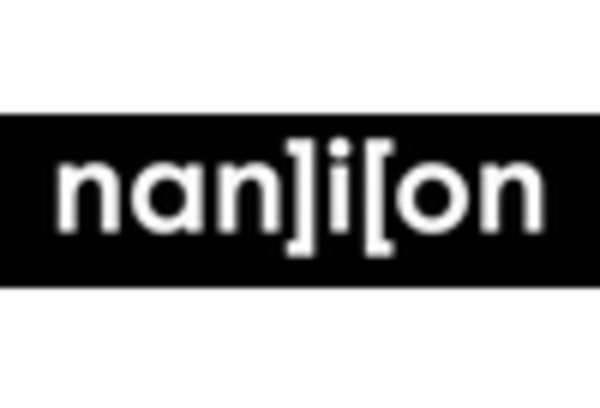Emergence of Personalized Medicine
The rise of personalized medicine is significantly influencing the Label Free Detection Market, as tailored therapeutic approaches require precise biomolecular analysis. This trend is expected to drive the market's growth, with projections indicating a potential increase of 20% in demand for label free technologies over the next few years. Personalized medicine relies heavily on understanding individual patient profiles, necessitating advanced detection methods that can provide detailed insights into molecular interactions. Label free detection techniques offer the advantage of analyzing complex biological samples without the interference of labels, making them ideal for personalized applications. As healthcare continues to evolve towards more individualized treatments, the relevance of label free detection methods becomes increasingly pronounced.
Regulatory Support and Standardization
Regulatory support and the push for standardization within the Label Free Detection Market are fostering a conducive environment for growth. Regulatory bodies are recognizing the importance of label free technologies in ensuring accurate and reliable results in various applications, from drug discovery to clinical diagnostics. This recognition is likely to lead to the establishment of guidelines and standards that will enhance the credibility of label free detection methods. As a result, companies are more inclined to invest in these technologies, knowing that they will meet regulatory requirements. The anticipated regulatory framework could potentially increase market confidence, encouraging wider adoption of label free detection solutions across different sectors, thereby driving overall market expansion.
Growing Demand for Point-of-Care Testing
The Label Free Detection Market is witnessing a surge in demand for point-of-care testing solutions, driven by the need for rapid and accurate diagnostic tools. As healthcare systems increasingly prioritize patient-centric approaches, the ability to conduct tests at the site of care becomes paramount. This shift is expected to contribute to a market growth rate of around 12% annually, as more healthcare providers adopt label free detection methods for immediate results. The convenience and efficiency of point-of-care testing align with the broader trend towards decentralized healthcare, where patients benefit from timely interventions. Consequently, the label free detection technologies are being integrated into portable devices, enhancing their accessibility and usability in various clinical settings.
Rising Adoption of Label Free Techniques
The Label Free Detection Market is experiencing a notable increase in the adoption of label free techniques across various sectors, particularly in pharmaceuticals and biotechnology. This trend is driven by the need for more efficient and cost-effective methods for biomolecular interactions. The market is projected to grow at a compound annual growth rate (CAGR) of approximately 10% over the next five years, indicating a robust demand for these technologies. Researchers and developers are increasingly favoring label free detection methods due to their ability to provide real-time data without the need for fluorescent or radioactive labels, which can complicate experiments. This shift not only enhances the accuracy of results but also streamlines workflows, making it a preferred choice in laboratories worldwide.
Increased Investment in Research and Development
Investment in research and development within the Label Free Detection Market is on the rise, as organizations seek to innovate and improve detection technologies. This influx of funding is likely to lead to the development of advanced systems that offer higher sensitivity and specificity. According to recent estimates, R&D spending in this sector could reach upwards of 15 billion dollars by 2026, reflecting a strong commitment to enhancing detection capabilities. Companies are focusing on creating integrated platforms that combine various detection methods, thereby expanding the applications of label free technologies. This trend not only fosters innovation but also encourages collaboration between academic institutions and industry players, further propelling the market forward.


















Leave a Comment